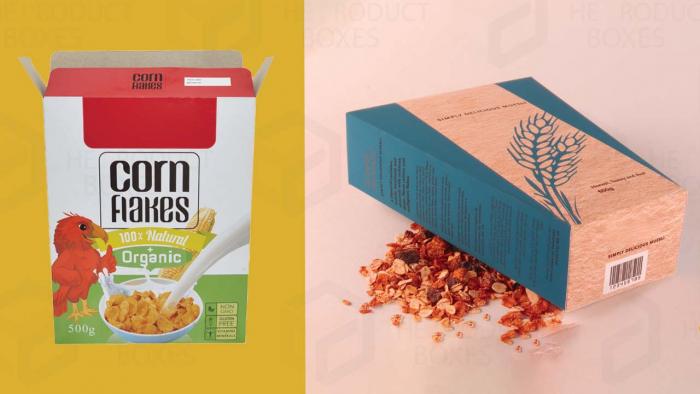
Cereal boxes hold a unique place. They serve as vessels for transporting and storing breakfast staples and play a significant role in preserving the freshness and nutritional integrity of the contents within. With health-conscious consumers becoming increasingly discerning about the products they purchase, the materials used for cereal box packaging are under scrutiny like never before.
Cereal boxes hold a unique place. They serve as vessels for transporting and storing breakfast staples and play a significant role in preserving the freshness and nutritional integrity of the contents within. With health-conscious consumers becoming increasingly discerning about the products they purchase, the materials used for cereal box packaging are under scrutiny like never before.
Quality of Material Usage
There are the following materials used for the packaging, but the most common and the primary materials used for box packaging are:
- Cardboard material
- Paperboard material
Cardboard or paperboard is the primary material used for cereal box packaging. They are mainly made from wood fibers; these materials are lightweight, sturdy, and easily customizable. It provides the necessary structural integrity to protect the contents from damage during handling and transportation.
Furthermore, cardboard and paperboard are biodegradable and recyclable. They are also making them environmentally friendly choices for packaging. To enhance their sustainability, manufacturers often opt for recycled cardboard or paperboard. It also reduces the demand for virgin fibers and minimizes the carbon footprint of packaging production.
An Embellishment of Inks and Coatings
The inks and coatings used for printing cereal boxes are crucial for conveying essential information to consumers while also ensuring the visual appeal of the packaging. Maintaining the healthiness of food is necessary by using non-toxic food-grade inks and coatings that do not leach harmful chemicals into the cereal.
Soy-based or vegetable-based inks are preferable as they are derived from renewable resources and contain fewer volatile organic compounds (VOCs) than traditional petroleum-based inks. Additionally, water-based coatings provide a protective barrier without introducing harmful substances into the packaging.
Essential Components for Food Storage and Protection
So many components are necessary to maintain the product's nutrition. Some of these are mentioned here:
- Barrier Films
- Laminates and Composites
- Biodegradable and Compostable Alternatives
Barrier Films: Barrier films protect against moisture, oxygen, odor, and other external contaminants. These films are often made from materials like polyethylene, polypropylene, or polyester, and they can be customized to provide specific barrier properties tailored to the needs of different food products. Barrier films help prevent oxidation, moisture absorption, and microbial growth, thereby preserving the freshness and quality of the food.
Laminates and Composites: Laminates and composite materials are commonly used in food packaging to combine the beneficial properties of multiple materials. For example, a laminate might consist of layers of plastic film, aluminum foil, and paper, each contributing to different aspects of protection and preservation. Layering materials with complementary properties, laminates, and composites can enhance barrier properties, structural integrity, and resistance to punctures and tears, ensuring adequate food protection throughout the distribution chain.
Biodegradable and Compostable Alternatives: As consumer demand for sustainable packaging solutions grows, biodegradable and compostable alternatives have gained popularity in the food packaging industry. When disposed of in composting facilities or natural environments, these materials are designed to break down naturally into non-toxic components.
Biodegradable plastics derived from renewable sources such as cornstarch or sugarcane offer a greener alternative to traditional petroleum-based plastics. Compostable packaging made from materials like compostable paper, cardboard, or bioplastics provides an eco-friendly option for food storage and protection while minimizing environmental impact.
Get the Antimicrobial Coating for Packaging with Us
Antimicrobial coatings are applied to food packaging materials to inhibit the growth of bacteria, molds, and other microorganisms that can cause food spoilage and contamination. These coatings help extend the shelf life of perishable foods and reduce the risk of foodborne illnesses. Antimicrobial coatings may be based on natural compounds like essential oils or synthetic antimicrobial agents approved for food contact applications.